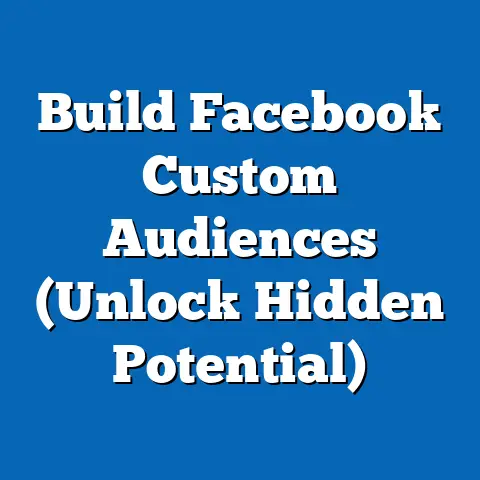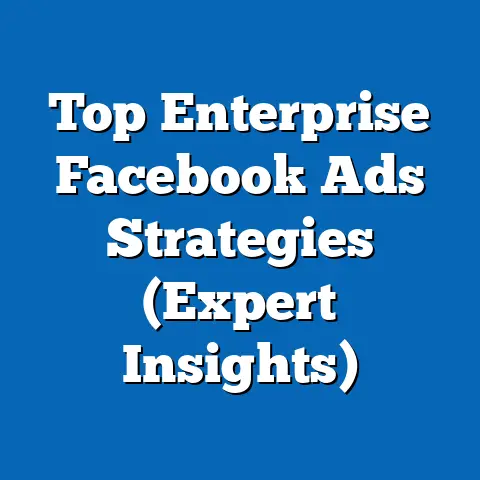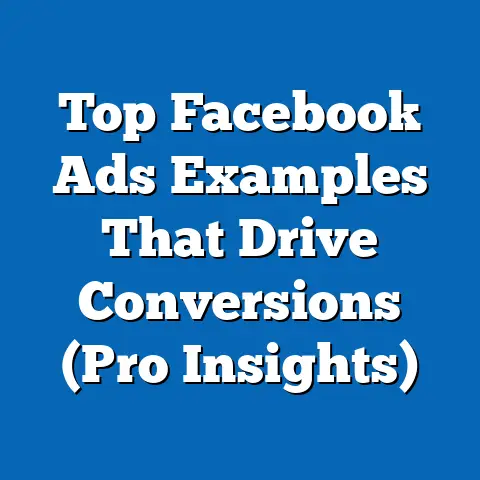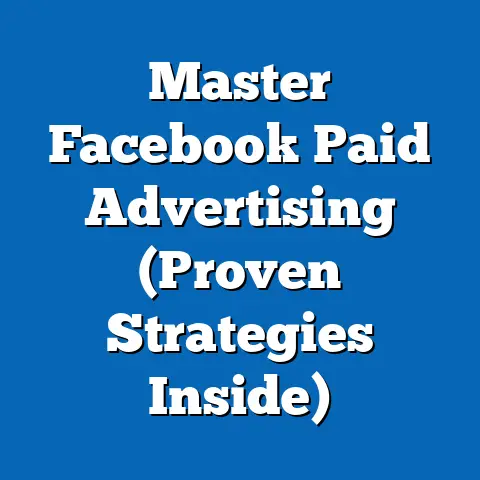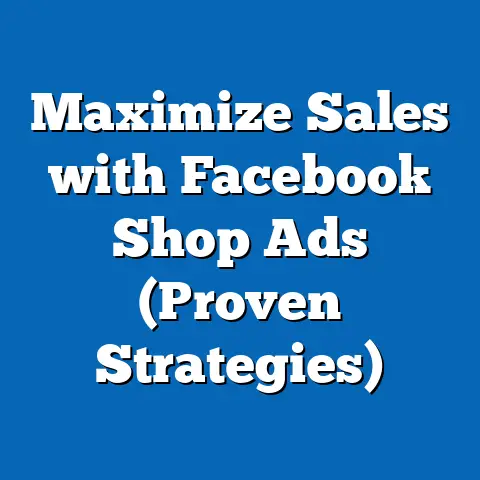Campaign vs. fb ad Set: Unlocking Strategy Secrets (Expert Guide)
Have you ever launched a Facebook ad campaign, poured your heart and soul (and budget!) into it, only to be met with underwhelming results? I know I have! It’s frustrating, especially when you see other businesses thriving with their Facebook ads. The truth is, success on Facebook isn’t just about having a great product or service; it’s about understanding the platform’s architecture. And that starts with grasping the fundamental differences between a Facebook campaign and an ad set. It’s a distinction that, surprisingly, many advertisers still struggle with, despite its dramatic impact on ad performance.
In this guide, I’m going to pull back the curtain on Facebook’s advertising structure. I’ll walk you through the hierarchy, dissect the roles of campaigns and ad sets, and reveal the strategy secrets that can unlock significantly improved ad performance, laser-focused audience targeting, and, most importantly, a higher ROI. Trust me, mastering this distinction is a game-changer.
Section 1: Understanding Facebook’s Advertising Structure
Think of Facebook advertising like building a house. You need a blueprint (the campaign), individual rooms (ad sets), and the furniture and décor inside each room (the ads themselves). This hierarchical structure – Campaign, Ad Set, and Ad – is the backbone of every successful Facebook advertising strategy.
- Campaign: At the top of the pyramid, the campaign defines your overarching advertising objective. What do you want to achieve? Brand awareness? More leads? Conversions? The campaign sets the tone and direction for everything that follows.
- Ad Set: The ad set is where you define who you want to reach, where you want to reach them, and how much you’re willing to spend. It’s the engine that drives your campaign, allowing you to target specific audiences, set budgets, and choose placements.
- Ad: The ad itself is the creative element: the image, video, and copy that your audience actually sees. Ads live within ad sets and are targeted based on the parameters you define.
Let’s break these down further.
What is a Campaign?
The Facebook campaign is the highest level of your advertising structure. It’s the container that holds all your ad sets and ads, and its primary function is to align your advertising efforts with your overall business goals.
Its Role:
- Defining Objectives: Choosing the right campaign objective is crucial. Facebook offers a range of objectives, from awareness and consideration to conversion. Selecting the wrong objective can lead to wasted budget and poor results.
- Setting the Stage: The campaign objective informs Facebook’s algorithm, guiding it to find users most likely to take the desired action. For example, if your objective is “Conversions,” Facebook will prioritize showing your ads to people who have a history of making purchases online.
What is an Ad Set?
The ad set is where the real magic happens. It’s where you define your target audience, set your budget, choose your placements, and schedule your ads.
Its Role:
- Targeting: The ad set allows you to drill down and target specific demographics, interests, behaviors, and even custom audiences based on your existing customer data.
- Budgeting: You can set daily or lifetime budgets at the ad set level, giving you control over how much you spend on each audience segment.
- Scheduling: You can schedule your ads to run at specific times of day or days of the week, maximizing their impact.
- Placements: Choose where your ads appear: Facebook, Instagram, Audience Network, Messenger, etc. Testing different placements can significantly improve your ad performance.
Takeaway: Understanding the hierarchy is crucial. The campaign sets the what (your objective), the ad set defines the who, where, and how much, and the ad delivers the message.
Section 2: The Role of Campaigns in Advertising Strategy
The campaign level in Facebook Ads Manager is more than just a container; it’s the strategic foundation of your advertising efforts. It dictates the why behind your ads. Choosing the right campaign objective is paramount because it directly influences how Facebook’s algorithm optimizes your ads.
Focus on Objectives: Brand Awareness, Lead Generation, Conversions, etc.
Facebook offers a variety of campaign objectives, each designed to achieve a specific outcome. Here’s a brief overview:
- Awareness: Ideal for reaching people who are likely to remember your brand. Objectives include Brand Awareness and Reach.
- Consideration: Focuses on getting people to think about your business and seek more information. Objectives include Traffic, Engagement, App Installs, Video Views, and Lead Generation.
- Conversion: Designed to drive specific actions on your website or app, such as purchases, sign-ups, or form submissions. Objectives include Conversions, Catalog Sales, and Store Traffic.
How to Choose the Right Campaign Objective Based on Business Goals
The key is to align your campaign objective with your overall business goals. Ask yourself:
- What am I trying to achieve? Do I want to increase brand recognition, generate leads, or drive sales?
- What is my target audience’s current state? Are they familiar with my brand, or are they completely new to it?
- What is the desired action I want them to take? Visit my website, fill out a form, or make a purchase?
For example, if you’re launching a new product, you might start with an “Awareness” campaign to build brand recognition, followed by a “Traffic” campaign to drive people to your website for more information, and finally a “Conversion” campaign to encourage purchases.
Examples of Successful Campaigns and What Made Them Effective
Let’s look at a few examples:
- Example 1: Dollar Shave Club (Brand Awareness)
- Objective: Brand Awareness
- Strategy: Dollar Shave Club’s initial campaign used a viral video to introduce their brand and humorously explain their value proposition.
- Why it Worked: The video was highly engaging and shareable, generating massive brand awareness and driving traffic to their website.
- Example 2: HubSpot (Lead Generation)
- Objective: Lead Generation
- Strategy: HubSpot offered a free ebook in exchange for contact information.
- Why it Worked: The ebook provided valuable information to their target audience, attracting qualified leads and building their email list.
- Example 3: Warby Parker (Conversions)
- Objective: Conversions
- Strategy: Warby Parker used retargeting ads to show users who had previously visited their website ads featuring the specific glasses they had viewed.
- Why it Worked: Retargeting ads are highly effective because they target users who have already shown interest in your product or service.
- Objective: Brand Awareness
- Strategy: Dollar Shave Club’s initial campaign used a viral video to introduce their brand and humorously explain their value proposition.
- Why it Worked: The video was highly engaging and shareable, generating massive brand awareness and driving traffic to their website.
- Objective: Lead Generation
- Strategy: HubSpot offered a free ebook in exchange for contact information.
- Why it Worked: The ebook provided valuable information to their target audience, attracting qualified leads and building their email list.
- Objective: Conversions
- Strategy: Warby Parker used retargeting ads to show users who had previously visited their website ads featuring the specific glasses they had viewed.
- Why it Worked: Retargeting ads are highly effective because they target users who have already shown interest in your product or service.
Takeaway: Choose your campaign objective wisely. It’s the foundation of your entire advertising strategy.
Section 3: Navigating the Ad Set
The ad set is where you fine-tune your targeting, budget, and scheduling to reach the right people at the right time with the right message. It’s the control panel of your Facebook advertising efforts.
Delving into the Components of an Ad Set
Let’s break down the key components of an ad set:
- Audience Targeting:
- Demographics: Age, gender, location, education, job title, etc.
- Interests: Hobbies, passions, and things they care about.
- Behaviors: Purchase history, online activity, and other actions they take on and off Facebook.
- Custom Audiences: Target existing customers, website visitors, or people who have engaged with your content.
- Lookalike Audiences: Reach new people who are similar to your best customers.
- Budgeting and Scheduling:
- Daily Budget: The average amount you’re willing to spend each day.
- Lifetime Budget: The total amount you’re willing to spend over the entire duration of your ad set.
- Ad Scheduling: Choose specific times of day or days of the week to run your ads.
- Placements:
- Automatic Placements: Let Facebook optimize your ad placements across its network.
- Manual Placements: Choose specific placements, such as Facebook Feed, Instagram Feed, Audience Network, Messenger, etc.
- Demographics: Age, gender, location, education, job title, etc.
- Interests: Hobbies, passions, and things they care about.
- Behaviors: Purchase history, online activity, and other actions they take on and off Facebook.
- Custom Audiences: Target existing customers, website visitors, or people who have engaged with your content.
- Lookalike Audiences: Reach new people who are similar to your best customers.
- Daily Budget: The average amount you’re willing to spend each day.
- Lifetime Budget: The total amount you’re willing to spend over the entire duration of your ad set.
- Ad Scheduling: Choose specific times of day or days of the week to run your ads.
- Automatic Placements: Let Facebook optimize your ad placements across its network.
- Manual Placements: Choose specific placements, such as Facebook Feed, Instagram Feed, Audience Network, Messenger, etc.
How the Ad Set Allows Advertisers to Test Different Audiences and Placements, Optimizing for Performance
The ad set is your testing ground. It allows you to experiment with different audiences, budgets, schedules, and placements to see what works best.
- A/B Testing: Create multiple ad sets with different targeting parameters to see which audience responds best to your ads.
- Placement Optimization: Test different placements to see where your ads perform best.
- Budget Allocation: Allocate more budget to ad sets that are performing well and less budget to those that are not.
Takeaway: The ad set is your key to targeting the right people, optimizing your budget, and maximizing your ad performance.
Section 4: The Interplay Between Campaigns and Ad Sets
Analyzing How Campaigns and Ad Sets Work Together to Create a Cohesive Advertising Strategy
Think of it like a symphony orchestra. The campaign is the conductor, setting the overall tone and tempo. The ad sets are the individual sections (strings, woodwinds, brass), each playing their part to create a beautiful and harmonious sound.
- Alignment: Ensure that your ad set targeting aligns with your campaign objective. For example, if your campaign objective is “Conversions,” your ad sets should target audiences who are most likely to make a purchase.
- Relevance: Your ads should be relevant to the audience you’re targeting. Use compelling visuals and persuasive copy that speaks directly to their needs and interests.
Discussing the Importance of Alignment Between Campaign Objectives and Ad Set Targeting
Misalignment between campaign objectives and ad set targeting is a common mistake that can lead to wasted budget and poor results.
- Example: If your campaign objective is “Brand Awareness,” but your ad sets are targeting a very narrow audience, you’re not maximizing your reach.
- Solution: Ensure that your ad sets are targeting a broad enough audience to achieve your brand awareness goals.
Case Studies or Hypothetical Scenarios that Illustrate the Synergy Between a Well-Defined Campaign and Its Corresponding Ad Sets
Let’s consider a hypothetical scenario:
- Business: A local bakery wants to increase sales of its custom cakes.
- Campaign Objective: Conversions (specifically, online orders).
- Ad Set 1:
- Targeting: People who have recently engaged with the bakery’s Facebook page or website.
- Ad: An image of a beautifully decorated custom cake with a call to action to “Order Now.”
- Ad Set 2:
- Targeting: People who have shown an interest in baking, cake decorating, or party planning.
- Ad: An image of a variety of custom cakes with a headline that reads, “Make Your Next Celebration Unforgettable.”
- Targeting: People who have recently engaged with the bakery’s Facebook page or website.
- Ad: An image of a beautifully decorated custom cake with a call to action to “Order Now.”
- Targeting: People who have shown an interest in baking, cake decorating, or party planning.
- Ad: An image of a variety of custom cakes with a headline that reads, “Make Your Next Celebration Unforgettable.”
In this scenario, the campaign objective (Conversions) guides the ad set targeting. Each ad set targets a specific audience with a relevant message, increasing the likelihood of driving online orders.
Takeaway: Alignment is key. Ensure that your ad sets are working in harmony with your campaign objective to achieve your desired results.
Section 5: Common Mistakes to Avoid
Even seasoned advertisers sometimes fall into common traps when managing Facebook campaigns and ad sets. Recognizing these pitfalls and learning how to avoid them can save you time, money, and frustration.
Highlighting Common Pitfalls Advertisers Encounter When Managing Campaigns and Ad Sets
Here are some common mistakes to watch out for:
- Confusing Campaign Objectives with Ad Set Targeting: As I mentioned earlier, confusing the two is a recipe for disaster. The campaign objective is the what, while the ad set targeting is the who.
- Neglecting to Optimize Ad Sets, Leading to Wasted Budget: Don’t just set it and forget it! Regularly monitor your ad set performance and make adjustments as needed.
- Failing to Analyze Performance Metrics Effectively: Data is your friend. Pay attention to key metrics like reach, impressions, click-through rate (CTR), and conversion rate to understand what’s working and what’s not.
Offering Insights on How to Avoid These Mistakes and Improve Overall Ad Performance
Here’s how to avoid these mistakes:
- Clearly Define Your Campaign Objective: Before you even create your campaign, take the time to clearly define your objective. What do you want to achieve?
- Regularly Monitor and Optimize Your Ad Sets: Check your ad set performance at least once a week (or more frequently if you have a large budget).
- Learn to Interpret Your Data: Understand what your metrics are telling you and make data-driven decisions.
Takeaway: Avoid these common mistakes by clearly defining your objectives, regularly monitoring your ad sets, and learning to interpret your data.
Section 6: Advanced Strategies for Mastering Campaigns and Ad Sets
Once you’ve mastered the basics of campaigns and ad sets, you can start exploring advanced strategies to take your Facebook advertising to the next level.
Introducing Advanced Tactics for Leveraging Campaigns and Ad Sets
Here are a few advanced tactics to consider:
- A/B Testing Strategies for Ad Creatives and Targeting: Continuously test different ad creatives (images, videos, copy) and targeting parameters to see what resonates best with your audience.
- Dynamic Ads and How They Fit Into Campaign Strategies: Dynamic ads automatically show the most relevant products to each user based on their browsing history.
- Retargeting Strategies Using Custom Audiences Within Ad Sets: Retargeting is a powerful way to re-engage users who have previously interacted with your business.
Discussing the Importance of Continuous Learning and Adaptation in a Rapidly Changing Advertising Landscape
Facebook’s advertising platform is constantly evolving. New features are introduced, algorithms are updated, and best practices change.
- Stay Informed: Read industry blogs, attend webinars, and follow experts on social media to stay up-to-date on the latest trends.
- Experiment: Don’t be afraid to try new things and see what works for your business.
- Adapt: Be willing to adjust your strategies based on the changing landscape.
Takeaway: Embrace continuous learning and adaptation to stay ahead of the curve in the ever-changing world of Facebook advertising.
Conclusion
Understanding the difference between a Facebook campaign and an ad set is fundamental to achieving success on the platform. The campaign sets the strategic direction, while the ad set executes the plan with precision. By aligning your campaign objectives with your ad set targeting, monitoring your performance, and continuously learning and adapting, you can unlock significantly improved ad performance, laser-focused audience targeting, and a higher ROI.
Now, I encourage you to take a critical look at your current Facebook ad strategies. Are your campaigns and ad sets working in harmony? Are you making the most of the platform’s targeting capabilities? By refining your understanding of campaigns and ad sets, you can transform your Facebook advertising from a cost center into a powerful engine for growth. So, go forth and conquer the Facebook advertising landscape!

